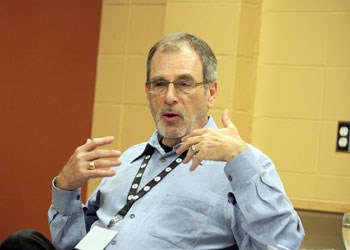The Yorkton Film Festival offers opportunities to learn more about film, and one of the workshops on that subject discussed the format of Narrative Non-fiction. Director David Rabinovitch discussed his approach to the form and the ways he tells stories, using the example of his film The Sultan's Women.
Rabinovitch admits that it can initially seem like an uncomfortable marriage of styles, as the form uses actors to reenact scenes from history. He describes it as a mix of cinema verite and elements of a narrative production.
"These styles can seem at odds with each with each other, as one requires total control over the acting, lighting, props and locations, and the other captures people as they experience a real moment in a certain time in authentic places with very little direction," he explains.
The style is driven by a desire to tell stories that are little known and unfamiliar to most people. He says that everything in the film is based on research, and that the desire is to find voices from people who experienced the events depicted. Part of the challenge is finding a story and getting past what one might expect.
"Harem is a very loaded word, as we learned. You've got to very quickly abandon your preconceptions of what the story is. The pre-conception of what this is, if I took a survey and asked you what does harem mean to me, I know that 90 per cent will immediately say "sex-slaves!" It wasn't that way at all, as we show you."
In this case, research was complicated by the fact that many of the women didn't leave written documentation of their experiences, and the ones who did were written in a language that nobody reads today.
"It was a case of a revolution cutting a people off from their past."
He says he takes the approach he does because of budget concerns. He says that it's relatively inexpensive to get a film that looks accurate and tells an emotionally resonant story with less money. It also allows him to use less expensive actors, as expectations are different when you're working in a documentary.
He says it's also important to keep the modern world out of his films, even though it is difficult to accomplish. This is accomplished by finding the right location and framing it creatively to keep people within the film. He says an early cut with expert interviews was a jarring experience and kept people out of the film. Watching the events better explained what happened.
He says that this is a format audiences respond to, pointing out that it did 70 per cent better than the average rating in the documentary slot on Vision TV when it first aired, building on its audience in the second week. He admits it's sometimes difficult to convince broadcasters, but says it's a format that has audience appeal across borders.




